Better Shutter Button
Gareth's Tips, Tools, and Shop Tales - Issue #84
Every issue, I get many email from readers telling me how much they love this newsletter and look forward it to each week. But, my subscriber base is growing glacially. If you’re a fan, please spread the word. Take something you’ve learned from an issue, share it, and link back here. It’s a huge help.
***
I am still looking for DIY storage solutions – storage made from milk jug bins, detergent boxes, jelly jar racks, etc. Anything either made from recycled materials or designed and built by YOU (or it can be something that you’ve spotted in the wild). I have gotten a few good entries so far. Please share yours with the class.
Better Shutter Button
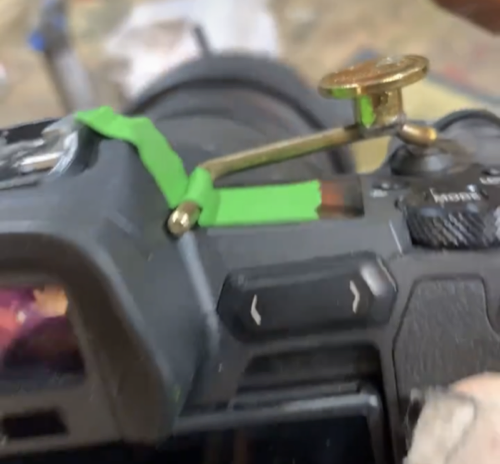
Dig that swanky hinge.
On Jimmy DiResta’s Instagram Stories, he shared this little hack – a bigger, more accessible shutter button that he added to his camera.
Must-See Maker TV: The Secret Life of Components
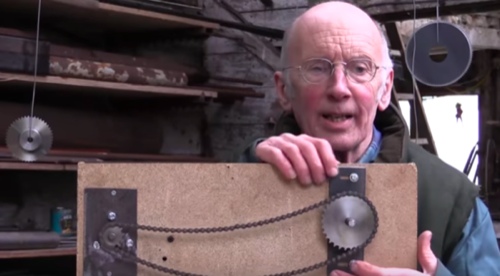
Who knew chain could be this interesting?
You may remember Tim Hunkin from the wonderful British TV series, The Secret Life of Machines. Tim is back, this time on YouTube, with a new series, a “spiritual successor” to that program, called The Secret Life of Components. It’s as great as the original. Tim has a real gift for imbuing everyday objects and backgrounded technologies with revelation and wonder. So far, the episodes have covered chain, LEDs, and hinges.
More Glue for You
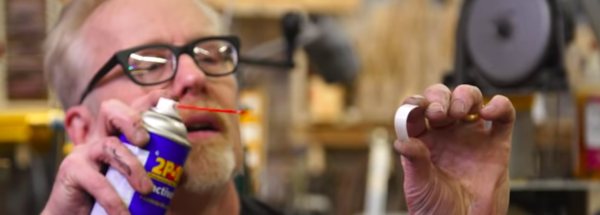
Accelerator, the quicker kicker-upper.
In this Adam Savage video, he admits that he hates working with CA glue and the 2 oz. bottles (see, I told ya!), but he sees it as a necessary evil. The video covers the basics of using CA, using a “kicker” to accelerate it, and using baking soda as a cheaper kicker alternative. The video also looks at things like using baking soda and CA glue to create a “dimensional gusset” that adds strength and stability to a join, how and when to use thin CA glues, and why it seems that CA glue sticks you to you much better than anything else (Spoiler: that’s because it was developed as chemical field suture during WWII – it was literally formulated to stick you to you!). Good stuff.
Extending Carpenter’s Glue Working Time
OK, I know, enough with the glue, already. Soon, Grasshopper, soon. In the meantime, did you know that you can extend the working time of carpenter’s (yellow, wood) glue by adding a bit of water to it? If you add too much, it will impact the bonding strength of the glue, so 20 to 1 (glue to water) is max.
Using 3D Printing Infill as a Design Feature
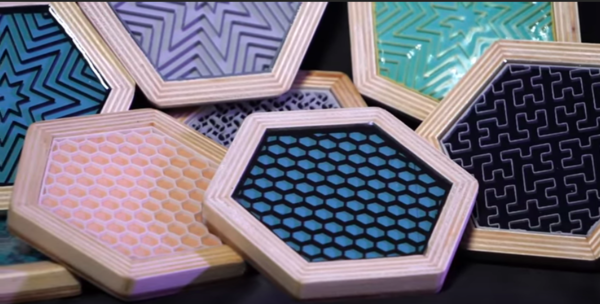
That’s not a bug, that’s a feature!
I absolute love this idea of using infill structures in 3D printing as an artistic design. (Infill is the patterned support structure used inside of objects to provide strength while cutting down on printing time, weight, and filament). Joe of Makes’n’Breaks decided to foreground the usually hidden patterns of infill in a series of coasters combining the 3D printed infill structures in a wooden frame. The results are beautiful.
Maker’s Muse
I saw this on the writer Louis Evans’s Twitter feed and it brought a smile to my face. I can’t wait for this pandemic to be over and spring to fully leap forth.
Ask yourself:
Could this meeting be a zoom?
Could this zoom be a phone call?
Could this phone call be an email?
Could this email be a text?
Could this text be unsent?
Could we, in silence, retreat to the forest?
Could we, by game trails & forgotten paths, vanish into the trees?
Shop Talk
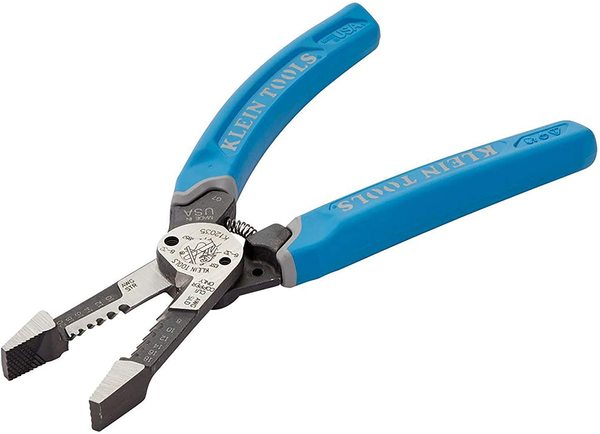
These might be the droids you’re looking for.
In response to my posting last week of a pair of Lineman’s pliers that I saw several well-known makers raving about, a couple of y0u wrote in to say: Not so fast, Reddy Kilowatt. They are not very well-made or durable:
Tim S wrote: I’ve used these and the quality doesn’t seem to be there. The flipping seems to be a gimmick. I prefer these (above). Made in the USA, too, and for the same price.
***
In response to the piece on creating backpack pick-pocket deterrence using diamond-knot paracord:
Susan L: The tip about using paracord for backpack theft deterrence – wouldn’t it be much cheaper and easier to just use two key rings?
Yes, you’re right, although that might be more of an annoyance to the owner than any thief.

Mike Mc: I’ve used the diamond knot for a few years now, but actually upped my game. I find these little s-clip carabiners with the lock in the center work great as they will let you lock multiple pouches together. I place the switch to the inside as an extra measure to add just a bit more complication in the unlocking process.
***
Reader Joe M had a fabulous idea for a new section of the newsletter.
“A new skill section where users submit skills they’d like to learn. You pick one skill and post/repost the basics and build from there, and end it with a simple project that readers can try out and submit their results. For example, I’ve never made anything with a resin mold. I know it’s not that hard, but knowing what products to start with, basic steps, and some kind of project would be a great motivator to close that skill gap.”
Good one, Joe! And since you proposed it, I want to kick off this new “Skill Set” series by covering your suggestion: Basic silicone molding and resin casting. Look for the first entry next week. Thanks!
03/25/21





